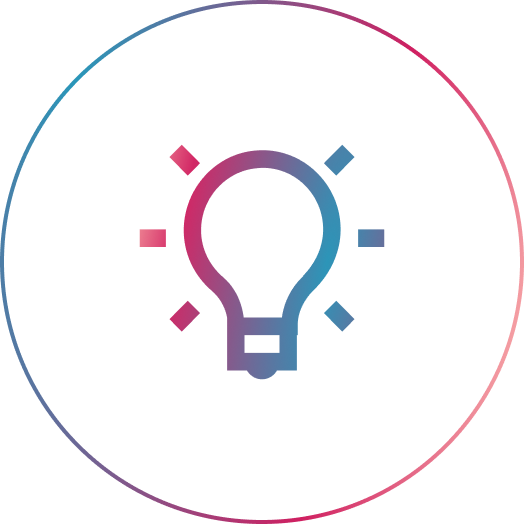Many companies zero in on lead generation when implementing Software-as-a-Service marketing strategies, but the SaaS field is simply too competitive to stop there. In order to maximize success, acquiring a lead should be just the beginning. To truly thrive and achieve long-term customer growth, SaaS brands need to adopt a strategy that supports customers through each and every stage of their journey, from first impression to long-term retention and advocacy.
Modern B2B buyers tend to be more informed, more skeptical, and more in control than ever. Winning their trust and loyalty today requires more than a single touchpoint or a clever social media ad. Instead, businesses have to design an interconnected system that includes branding, CRM integration, lifecycle campaigns, and optimized websites, all working together not just to generate leads, but to gain and retain customers.
What Exactly Is Journey-Based SaaS Marketing?
Traditional funnel models divide SaaS marketing into three stages:
- Awareness – Brand visibility and initial discovery.
- Consideration – Lead nurturing and evaluation.
- Decision – Conversion, onboarding, and customer acquisition.
A strategy for the entire buyer journey needs to extend beyond these phases to include retention, upselling, cross-selling, and customer advocacy. This end-to-end approach enables SaaS companies to optimize all stages of the customer lifecycle in order to turn leads into loyal brand supporters.
Rather than seeing the process as a straight line that ends at conversion, smart journey-based marketers view it as a loop. This means current customers are constantly re-engaged and encouraged to generate new business through both referrals and expansions.
Why SaaS Companies Need a Journey-Based Approach
According to Llama Lead Gen’s Ultimate Guide to B2B SaaS Marketing, 92% of SaaS companies actually fail in their first three years. One major reason is they remain overly reliant on early-stage activities without having a solid post-conversion strategy.
Business-to-Business (B2B) SaaS marketing that focuses solely on acquisition often results in high churn, poor customer satisfaction, and inefficient use of marketing budgets.
On the other hand, a journey-based approach can do the following:
- Build brand equity and trust early.
- Increase customer lifetime value (CLTV).
- Lower customer acquisition cost (CAC) over time.
- Boost retention and reduce churn.
- Enable meaningful, data-driven decision-making.
Long-term customer growth typically comes not from collecting more leads, but from nurturing the right ones by providing an experience that is consistent, valuable, and personalized.
Set the Tone Early with Branding
Before a lead even enters your system, they need to understand who you are and what you stand for. A strong brand can differentiate you in a crowded SaaS market and build trust from the first touchpoint.
In Skale’s SaaS Marketing Funnel Guide, it is noted that consistent brand messaging helps reduce decision friction and shortens the sales cycle by making your product more memorable. This is especially important in B2B SaaS marketing where purchasing decisions often involve multiple stakeholders and fairly long evaluation periods.
Try these three tips to enhance branding in your SaaS strategy:
- Maintain visual and voice consistency across platforms.
- Align messaging with customer pain points, not just product features.
- Use storytelling to humanize your brand and build emotional resonance.
Use Website Optimization as Your Digital Sales Representative
Your website is technically your 24/7 sales machine and a critical piece of the journey puzzle. Whether visitors are finding you for the first time or revisiting to compare features before buying, every section of your site should be purposefully built to support the user’s journey.
A well-optimized website is important for all stages of the buyer journey. It should not only attract visitors through SEO and content, but also convert them with a frictionless user experience and strategic calls to action.
Key areas you should optimize:
- Landing Pages: Tailor them by campaign, persona, or journey stage.
- Navigation: Make it easy to find case studies, pricing, demos, and FAQs.
- Live Chat / Chatbots: Personalize support based on the user’s journey stage or behavior.
- Page Speed and Mobile UX: Guarantee a seamless experience across devices.
Turn Data Into Direction with CRM Integration
Too often, valuable lead and customer data remain separated. By integrating your CRM with marketing automation, ad platforms, and sales enablement tools, you can unlock the ability to deliver targeted messages to people at exactly the right time.
Good SaaS CRM integration empowers marketing teams to do all of the following efficiently:
- Score and segment leads based on behavior and demographics.
- Trigger lifecycle campaigns based on product usage or milestones.
- Share data with sales and customer success for better hand-offs.
- Track ROI and attribution across channels.
Using CRM data to track sales cycle drop-off points and the time it takes to convert allows marketers to optimize the entire customer journey rather than just the acquisition stage.
Keep Customers Engaged with Lifecycle Campaigns
Obviously, your marketing job doesn’t just end when someone clicks “Start Free Trial.” That’s actually when the real work begins.
Lifecycle marketing campaigns are designed to guide users through key stages such as onboarding, activation, adoption, upselling, and renewal. These automated email and in-app messaging flows are necessary for building stickiness and reducing churn.
As Llama Lead Gen points out in their data, around 70% of users who sign up for a free trial never actually convert to a paid plan. Proactive onboarding and what are called usage “nudges” can significantly improve conversion rates and also increase user satisfaction.
Examples of effective lifecycle campaigns include things like:
- Onboarding Series: Educational emails or videos that help new users get value quickly.
- Usage Milestones: Trigger messages when users reach key moments (e.g., “You’ve created your first dashboard!”).
- Re-Engagement: Reminders or incentives for inactive users.
- Renewal Nudges: Personalized offers or feature highlights before subscriptions expire.
Close the Loop with Customer Success & Advocacy
Happy customers are your best marketers. A focused buyer journey approach should include strategies to empower customer success teams and turn satisfied users into brand advocates.
Encourage high-value users to leave reviews, participate in case studies, or join referral programs. Not only does this extend your brand reach, but it also creates proof of satisfaction that can move new leads down the funnel faster.
You can use tools like net promoter score (NPS) surveys which ask a single question about satisfaction, and product feedback loops to continuously improve. Each and every insight gained from existing customers can help refine your sales cycle for future users.
Building Sustainable SaaS Growth for the Long Haul
SaaS companies will not experience peak success if they treat marketing as a one-way street aimed at lead capture. Instead, growth comes from building a marketing engine that connects branding, website optimization, CRM integration, and lifecycle campaigns to drive up long-term value.
At Three29, we help B2B SaaS companies create strategies that prioritize sustainable customer growth over short-term lead volume. From crafting compelling brand experiences to automating lifecycle campaigns that nurture loyalty, our experts design marketing systems that deliver results across the entire buyer journey.
Reach out to our team when you are ready to go beyond lead generation and discover the full potential of your marketing efforts.




